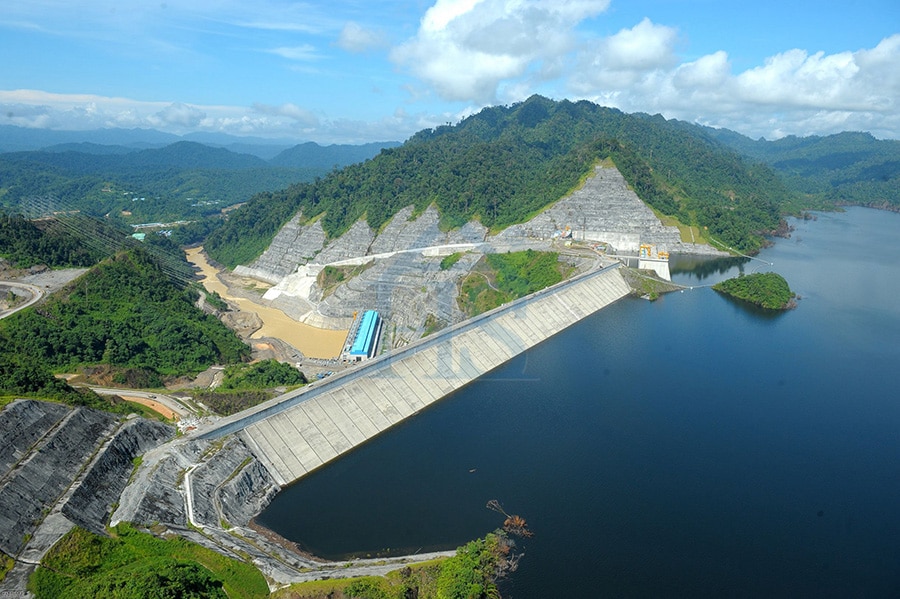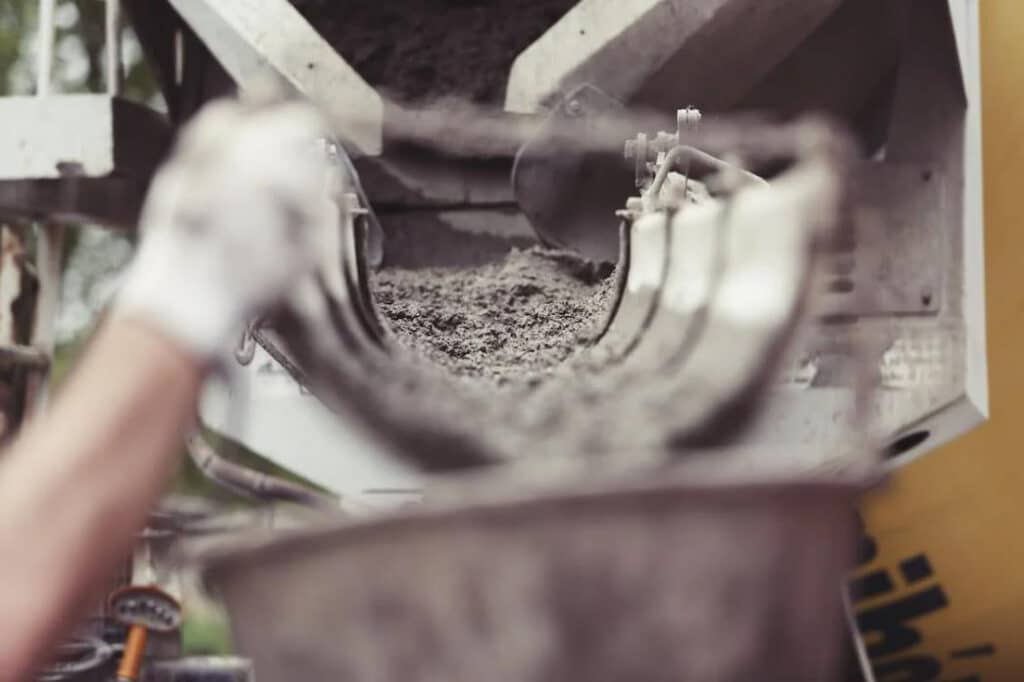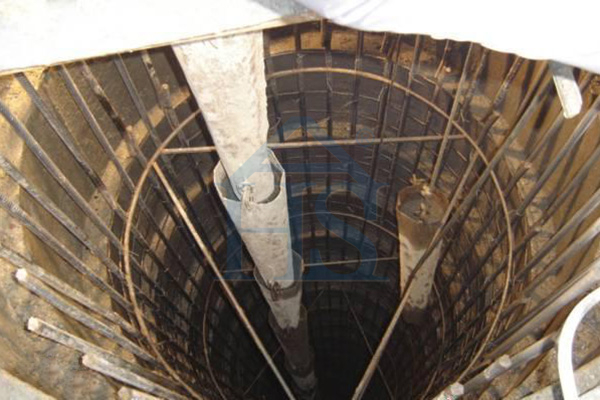RCC is a zero-slump, low-water-content concrete mixture that is compacted with vibratory rollers. It is commonly used in pavements, đập nước, and heavy-duty industrial floors due to its high strength and durability.
How Silica Fume Enhances RCC
When silica fume is added to RCC, it reacts with the calcium hydroxide produced during cement hydration, forming calcium silicate hydrate (CSH). The resulting CSH is denser and stronger, which improves the overall properties of the concrete. Hơn nữa, the ultrafine particles of silica fume fill the voids between cement particles, creating a tighter and more impermeable concrete matrix.
Benefits of Silica Fume in RCC
Incorporating silica fume in RCC offers numerous advantages, bao gồm:
Cải thiện sức mạnh
Silica fume increases both the compressive and tensile strengths of RCC, making it more suitable for heavy-duty applications.
Tăng độ bền
The denser CSH formed by the reaction between silica fume and calcium hydroxide enhances the durability of RCC, protecting it from chemical attacks and reducing its long-term maintenance requirements.
Giảm tính thấm
Silica fume’s ultrafine particles fill the voids in the concrete matrix, reducing permeability and improving the concrete’s resistance to water and chloride ion penetration.
Enhanced Abrasion Resistance
The addition of silica fume to RCC improves its abrasion resistance, making it more resistant to wear and tear, particularly in industrial settings.
Better Freeze-Thaw Resistance
Silica fume’s contribution to a denser concrete matrix results in increased freeze-thaw resistance, making RCC more suitable for use in cold climates.
The Role of Silica Fume in Reducing Cement Content
One of the key benefits of using silica fume in RCC is that it allows for a reduction in cement content without compromising the concrete’s performance. By partially replacing cement with silica fume, the overall cost of the concrete mix can be reduced, and the environmental impact of cement production can be minimized.
Nghiên cứu trường hợp: Successful Applications of Silica Fume in RCC

1. Bakun Dam, Malaysia
Completed in 2011, the Bakun Dam is the tallest concrete-faced rockfill dam in Southeast Asia. Silica fume was incorporated in the RCC mix to improve the dam’s strength, Độ bền, và khả năng chống lại các cuộc tấn công hóa học. Kết quả là, the dam has shown exceptional performance in withstanding the harsh tropical environment and the immense pressure of the impounded water.
2. Gibe III Dam, Ethiopia
The Gibe III Dam, completed in 2016, is the third-largest RCC dam in Africa. Silica fume played a crucial role in enhancing the concrete’s strength and durability, making it suitable for the aggressive environment, which included exposure to fluctuating water levels and variable temperatures. The dam now generates 1,870 MW of power, contributing significantly to Ethiopia’s electricity supply.
3. Upper Stillwater Dam, Hoa Kỳ
Located in Utah, the Upper Stillwater Dam was completed in 1987 and was the first major RCC dam in the United States. The use of silica fume in the RCC mix resulted in increased compressive strength, giảm tính thấm, and enhanced durability. These improvements allowed the dam to withstand the stresses associated with its primary function as a flood control and water storage facility.
These successful applications of silica fume in roller-compacted concrete demonstrate the material’s versatility and potential in improving the performance of various types of projects across the globe.
Sự kết luận
Sự kết hợp của khói silic trong bê tông đầm lăn mang lại nhiều lợi thế về cường độ, Độ bền, thấm, chịu mài mòn, và khả năng chống đóng băng-tan băng. Hơn nữa, lợi ích môi trường của việc sử dụng silica fume, bao gồm giảm hàm lượng xi măng và tái sử dụng chất thải công nghiệp, làm cho nó trở thành một lựa chọn bền vững cho các dự án xây dựng hiện đại. Tuy nhiên, phải tuân thủ các biện pháp xử lý và an toàn thích hợp để khắc phục những thách thức và hạn chế liên quan đến việc sử dụng khói silic trong RCC.
câu hỏi thường gặp
- Liều lượng silica fume điển hình trong RCC là bao nhiêu?
Liều lượng của silica fume trong RCC thay đổi tùy theo yêu cầu của dự án. Tuy nhiên, nó thường dao động từ 5% đến 15% theo khối lượng xi măng.
- Can silica fume be used with other vật liệu xi măng bổ sung?
Đúng, silica fume có thể được sử dụng kết hợp với các vật liệu xi măng bổ sung khác, chẳng hạn như tro bay và xỉ, để tăng cường hơn nữa các thuộc tính của RCC.
- Việc bổ sung khói silic có ảnh hưởng đến quá trình đóng rắn của RCC không?
Việc bổ sung silica fume có thể yêu cầu điều chỉnh quy trình bảo dưỡng do tính phản ứng cao của nó. Bảo dưỡng đầy đủ là cần thiết để đảm bảo tính năng mong muốn của RCC có chứa silica fume.
- Silica fume có phù hợp với tất cả các loại công trình bê tông không?
Trong khi silica fume mang lại nhiều lợi ích, sự phù hợp của nó phụ thuộc vào các yêu cầu cụ thể của dự án và các đặc tính mong muốn của bê tông. Điều cần thiết là phải tham khảo ý kiến của các kỹ sư và nhà cung cấp vật liệu để xác định việc sử dụng hợp lý silica fume trong một dự án nhất định.
- Silica fume được thêm vào hỗn hợp RCC như thế nào?
Có thể thêm khói silic vào hỗn hợp RCC ở dạng bột khô hoặc dạng sệt, tùy theo yêu cầu của công trình và quy trình sản xuất bê tông.





